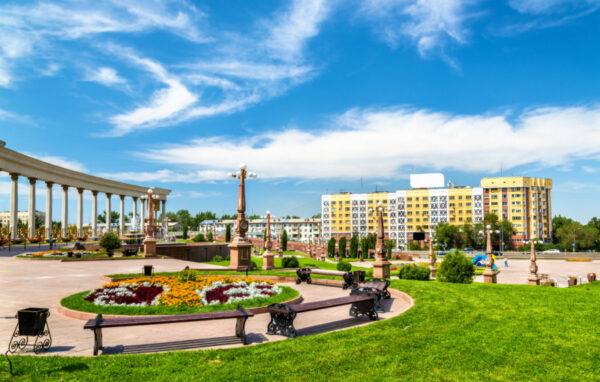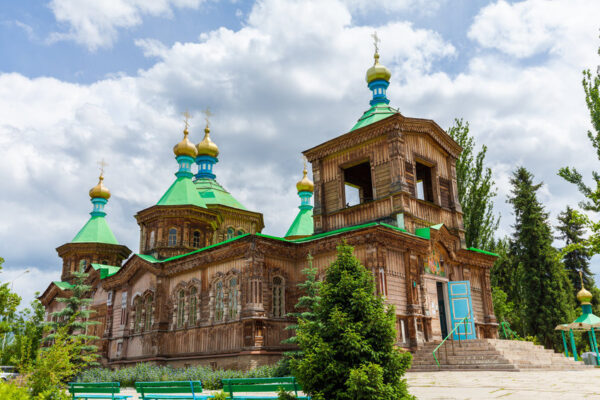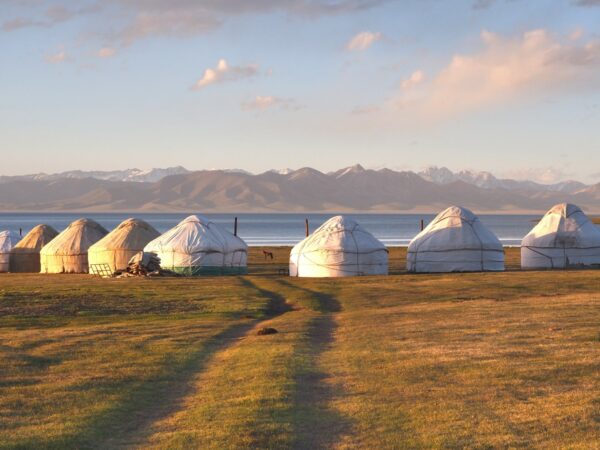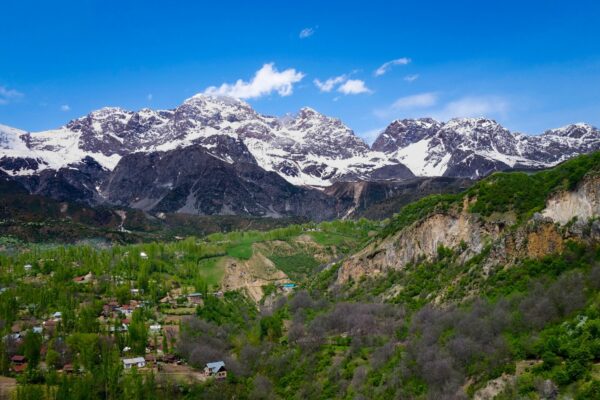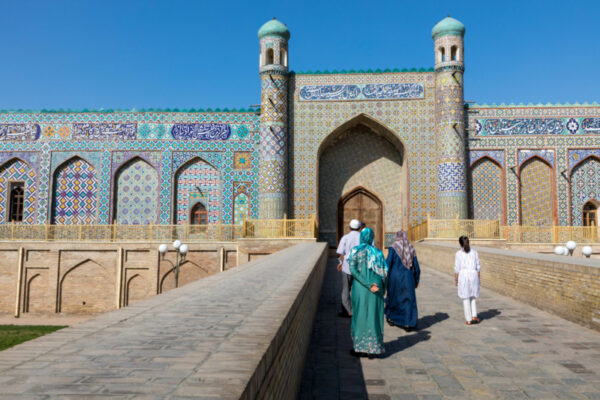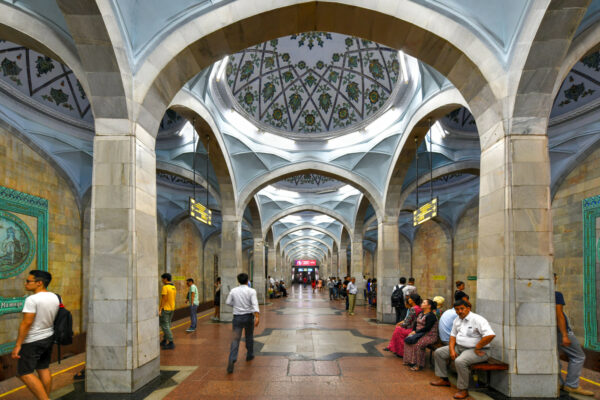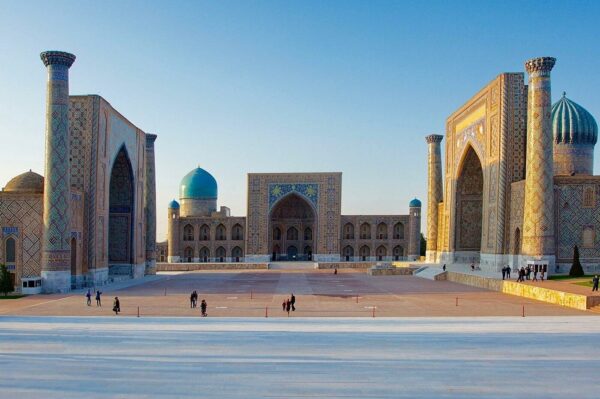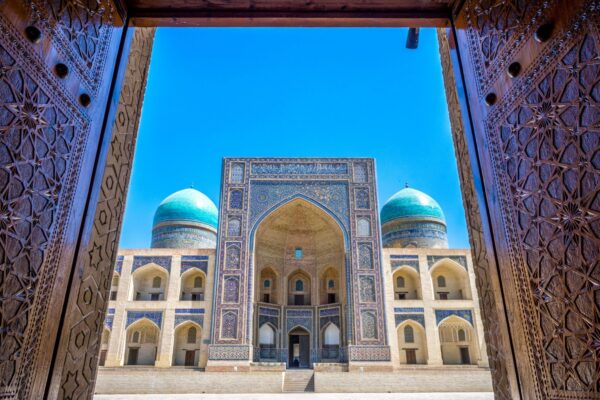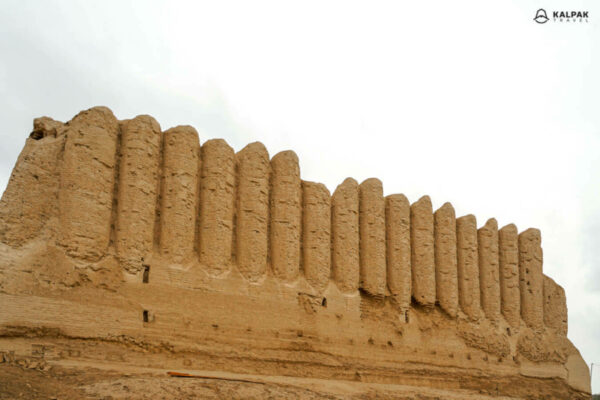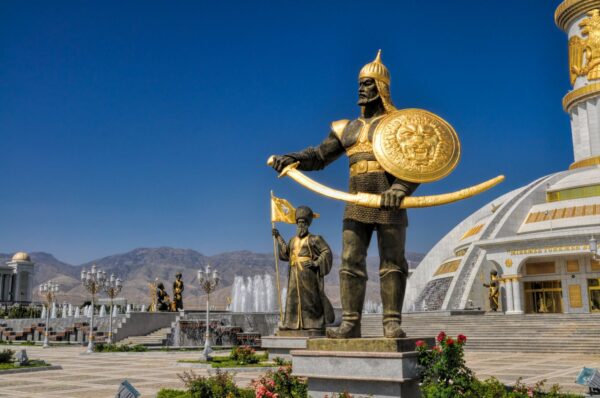The Silk Road Trail
Explore Kazakhstan, Uzbekistan, Kyrgyzstan and Turkmenistan
Four very different nations with a shared past, the Four Stans, Kazakhstan, Uzbekistan, Kyrgyzstan and Turkmenistan, occupy the heart of Eurasia. Turkic nations with similar languages and a mutual history under the Soviet Union, these four countries have taken wildly different paths since independence.
This popular route will take you through searing deserts and over high mountain passes. One moment you are horseback riding over mountain meadows in seclusion, the next moment arguing over prices at a bustling city market. You’ll go from catnapping in a nomad’s tent to unwinding in a luxurious B&B.
If you are unafraid to cover a lot of ground in a short amount of time and want to experience all that Central Asia has to offer: this is the route for you.
Key information
| Destinations | Kazakhstan, Kyrgyzstan, Turkmenistan, Uzbekistan |
|---|---|
| Activity | Active, Walking, Horseback Riding, Nature & Wildlife, National Parks, Culture, Archaeology, Cities, Museums & Galleries, History |
| Physical Level | Mild |
Suggested itinerary

City break in Almaty
Day 1–3 in Almaty
You can easily spend a month getting to know Almaty, the former capital city of Kazakhstan, but most organised tours will spend at least two nights here.
Popular highlights include Panfilov Park, with the massive monument to the fallen and the national instruments museum. The colourful Zenkov Cathedral is also located here, in arm’s reach of the city’s largest mosque. The Green Bazaar nearby forms the commercial heart of the city.
To learn more, the National History museum offers a well-conceived introduction to Kazakhstan, while those with an artistic inclination will appreciate the Kasteev museum, the largest repository of fine arts in the country.
Georgian food is trending worldwide, and Almaty possibly boasts more than a hundred Georgian restaurants.

Charyn Canyon, Kolsai Lakes and the Karkara Valley
Day 4–5 in Karakol
From Almaty the road to Karakol takes you past the scenic Charyn Canyon, Kolsai Lakes and the Karkara Valley, usually with a chance to stop for photos. You can reach Karakol in one day. Even better is to do it in two days, and overnight in a homestay halfway, at the tranquil Kolsai Lakes.
Karakol, with its gingerbread houses and picturesque mountain backdrop begs to be explored further, but the road is still long (and no longer brand-new--you’ll need a 4WD for the next section).

Explore Song Kol Lake
Day 6–7 in Song Kul Lake
Located in the mountains of Kyrgyzstan, Song Kul is a high-altitude, alpine lake perfect for hiking and horseback riding, although the area is covered in snow for the majority of the year.
The winters are harsh, but in spring the landscape bursts into life. Nowhere is greener than the slopes around this beautiful lake and dozens of nomadic shepherd families come here to set up camp with their flocks. Homestays offer accommodation and the opportunity to have a more authentic experience as you stay with local families, staying in traditional yurts.
Reaching Song Kul Lake isn’t the easiest task, but it is worth the effort, with access from Suusamyr and Kazarman by 4WD, horse or hike.

Suusamyr Valley and Arslanbob
Day 8–9 in Arslanbob
Once refreshed, there is more spectacular mountain scenery as you navigate several high passes before descending down the Suusamyr Valley, populated by shepherds eager to sell you their kurd (balls of salty dried cheese). At the end of the day, Arslanbob’s squirrelled forest and waterfalls are your final mountain reprieve, before the heat and bustle of Uzbekistan wakes you from your reverie. Slow travellers will definitely want to spend an extra night here to revel in the natural beauty of the village.

Ferghana Valley and its surroundings
Day 10–11 in Fergana Valley
The colourful ceramic dishes and silk dresses you encounter driving through the flatland of the Ferghana Valley will make it clear: this is a different kind of Stan. Taking a train is comfortable, straightforward and high-speed, a welcome change from bending hairpins in Kyrgyzstan.
Once across the border from Osh, you can either travel by train or private car through Ferghana Valley’s craft towns: Andijan, Rishton, Margilan and Kokand. From Kokand, it’s a quick scoot over the hills to Tashkent.

Tashkent
Day 12–13 in Tashkent
Most tours will take a full day to explore the city: on one hand, the Brutalist architecture, on the other hand, the remaining Islamic monuments. The Tashkent mosque holds one of the world’s oldest Korans, brought home as a souvenir by Emperor Timur when he came back from conquering Iraq.

Samarkand
Day 14–15 in Samarkand
A rebuilt 14th-century city, Samarkand in Uzbekistan is a striking place to visit with mosques covered in ceramic tiles and sand coloured buildings.
One of the major stops along the Silk Road, Samarkand is divided into the old city and the new city with the majority of historical monuments located in the old city.
The Registan is just one of the highlights, a large, open square (the name means “sandy place”) where people gathered, heard royal proclamations and watched executions. The buildings are covered in ceramic tiles and date back to the 15th century, restored in the 20th, they are among the finest examples of Islamic architecture anywhere.
Other sights include the Bibi Khanum Mausoleum, Ulughbek Observatory and a number of mosques and madrasas including the Ulughbek and the Shirdar Madrasas. The Shah-i Zinde is one of the key sights in Samarkand, which is a complex made up of mausoleums and mosques that houses the most important Muslim shrines that gives the complex its name, ‘the tomb of the living king’ - thought to be the grave of Qusam ibn-Abbas.
Paper-making is a craft that gets little attention among the splendour of Uzbekistan’s other artistic endeavors, but Samarkand’s paper museum is trying to change that. The museum traces down the history of paper from China to the Middle East and Europe, and shows the process as it is still being used today.
Drinkers, on the other hand, will enjoy a visit to the Hovrenko wine factory to hear the story of viticulture in a Muslim country.

Bukhara
Day 16–17 in Bukhara
Bukhara is over 2,000 years old, built on the site of a former Buddhist monastery, it has hundreds of minarets, mosques and madrassas with key sites being the Kalyan minaret, that's tower is a prominent landmark of the city, the Ismail Samani mausoleum and Bolo Haouz Mosque, one of many UNESCO World Heritage Sites in the city.
It is a great place to stock up on souvenirs, from hand-painted ceramics to silk scarfs for the relatives. But remember, Uzbeks are a trader nation: if you haven’t bargained, you have been fooled!
Bukhara has the best sleeping options in all of Central Asia: top-notch service combined with historic authenticity at boutique hotels like Komil or Amulet represent Uzbekistan at its finest. Al fresco dining under centuries-old plane trees in one of the restaurants surrounding the Lyabi Haus quarter is a must.
The city is connected to Samarkand and Tashkent by high-speed rail making it easy to reach for tourists.

Merv
Day 18–19 in Merv
From Bukhara, heading south will bring you to the border of Turkmenistan for the long desert drive to the ruined metropolis of Merv.
After visiting Merv, you can continue along the desert highway or take a flight instead to Ashgabat, the final culture shock of an intense journey long in distance and dense in experiences.

Ashgabat
Day 20–21 in Ashgabat
Ashgabat is a wonder, in that it is a huge, richly decorated, marble clad capital city that’s streets are largely empty of people.
Extravagant monuments and the golden statues of Turkmenbashi are key highlights of the city which holds the world record for the largest architectural star, among many other records including the world’s highest concentration of white marble buildings.
There are a number of museums, although entry prices can be high, such as the The Turkmen Carpet Museum, Fine Arts and the National Museum of History. There are also mosques and churches across the city with highlights being Turkmenbashy Ruhy Mosque and Ertugrul Gazi Mosque.
Any visit to Turkmenistan is necessarily guided, but Ashgabat is a place where rules are more relaxed. Budget an extra day here to wander unaccompanied and do some souvenir shopping. Besides sheepskin hats and intricate carpets, Turkmens are also famous for their ornate jewellery and their cognac.
Other itineraries you might like
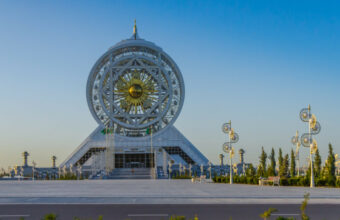
Essential Uzbekistan & Turkmenistan
Explore the historical heritage of Persian Central Asia
Approx. 14 days

